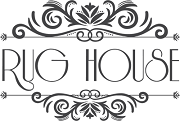
+1 888 123 4567

The origin of the use of the Persian Blue Rug
Persian blue rug is among the hues virtually ubiquitous throughout Iran, from new construction to the tiles of historic mosques. Persian rugs are no exception rather than the rule. However, depending on colour, Persian blue rugs are among the most popular styles of Persian rugs.
Persian pink, Persian crimson, and Persian green are other distinctive hues associated with Iran. Generally speaking, hues like blue and turquoise are amongst the ones that were most frequently utilized in Iranian apparel and clothing designs. Persian blue carpets were another item made in ancient Iran using this colour.
Examining Persian blue's use in Iranian Islamic architecture
Regardless of how carefully we consider taste, we cannot discount the importance and magnificence of Iranian Islamic architecture and its themes. Just focus on the specifics of their responsibilities and tile placements once again. Each artist admires the meticulous attention to detail in this form of Iranian Islamic architecture.
Persian blue is the hue of blue
Blue contains Persian blue. Persian blue; mild Persian blue are the three primary colour tones of a Persian rug. Additionally, it is a shade of dark blue that resembles dark indigo in terms of hue. People believe using this hue is inappropriate because mosques use it more frequently.
It has spread since the advent of Islam in Iran, although this misconception is unfounded because Persian blue was used before the entrance of Islam in Iran. Ancient Iranian pottery, which attests to this, is a good example.
Features
Thanks to this amazing Persian Print area rug, your living room will have a refined classic flair. With its elaborate pattern, this traditional theme sticks out forcefully. An attractive statement item like this gives your room a fresh appearance, and a plush, soft feel underfoot. With this area rug, you may add the appearance of heritage furniture at a reasonable price. Utilize your time with the family with our pet-friendly, simple-to-clean area rugs.
How did Persian Weavers dye the Yarns?
The colouring procedure makes the fibres receptive to the dyes by soaking the yarns in a dyestuff. The dying process begins once the dye pigments are introduced to the yarns and lasts for a specific time. The coloured yarns are then allowed to dry outside in the sun and air.
Many particularly dark brown, demand iron mordants, which can harm or fade the cloth. Therefore, the dying procedure needs great care and delicacy. Natural sources were the primary choices for dyeing fibres until the invention of synthetic colours.
Blue is a typical Persian carpet colour.
Mostly everyone believes that the colour blue evokes feelings of peace and tranquillity. Blue is a universal colour that denotes loyalty and trust in various civilizations. Persian blue rug frequently include blue, red and beige. Due to the scarcity of natural sources from which blue carpet dye could be derived, weavers had considerable difficulty producing the hue.
As a result, ancient Persian artisans were forced to find other supplies. A wood plant was used to produce a blue dye. However, the colour didn't stay vibrant for very long before fading. Thankfully, this issue was solved by the development of synthetic hues.
https://rughouseau.com/collections/persian-rugs